Dodge Journey: Installation
2.4L FRONT
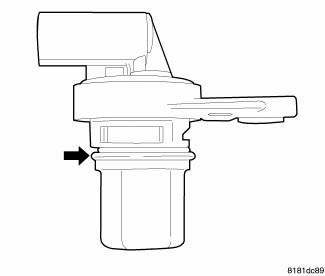
Fig. 38: Removing/Installing Camshaft Position Sensor
CAUTION: Install camshaft position (CMP) sensor utilizing twisting motion. Make sure CMP sensor is fully seated. Do not drive CMP sensor into the bore with mounting screw. This may cause CMP sensor to be incorrectly seated causing a faulty signal or no signal at all.
1. Lubricate sensor O-ring.
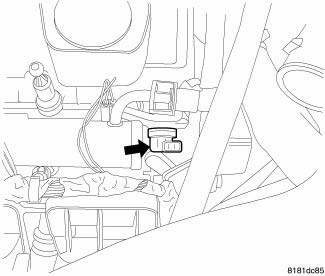
Fig. 39: Front Cam Sensor
2. Install CMP sensor and mounting bolt, tighten to 9 N.m (79.5 in. lbs.).
3. Connect electrical connector to camshaft position sensor.
4. Connect negative battery cable, tighten nut to 5 N.m (45 in. lbs.).
2.4L REAR
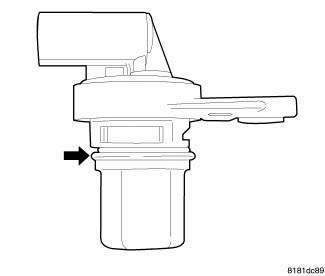
Fig. 40: Removing/Installing Camshaft Position Sensor
CAUTION: Install camshaft position (CMP) sensor utilizing twisting motion. Make sure CMP sensor is fully seated. Do not drive CMP sensor into the bore with mounting screw. This may cause CMP sensor to be incorrectly seated causing a faulty signal or no signal at all.
1. Lubricate sensor O-ring.
2. Install CMP sensor and mounting bolt, tighten to 9 N.m (79.5 in. lbs.).
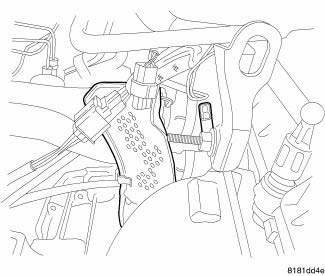
Fig. 41: Identifying Camshaft Position Sensor Heat Shield - Remove/Install
3. Connect electrical connector to camshaft position sensor.
4. Install heat shield onto mounting stud.
5. Install heat shield retaining nut and tighten.
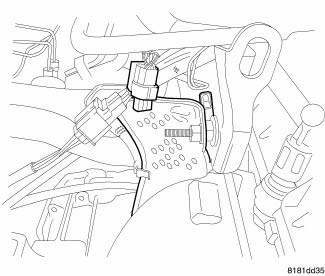
Fig. 42: Identifying Camshaft Position Sensor Heat Shield - Remove/Install
6. Connect the electrical connector.
7. Connect negative battery cable, tighten nut to 5 N.m (45 in. lbs.).
2.7L
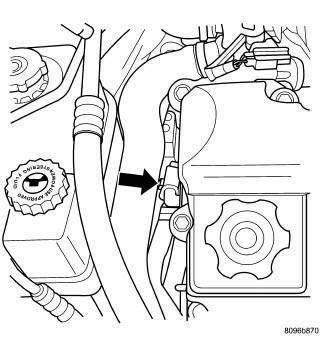
Fig. 43: Cam Sensor Location 2.7L
CAUTION: Install camshaft position (CMP) sensor utilizing twisting motion. Make sure CMP sensor is fully seated. Do not drive CMP sensor into the bore with mounting screw. This may cause CMP sensor to be incorrectly seated causing a faulty signal or no signal at all.
NOTE: If reinstalling the sensor, check the sensor O-ring for damage and replace if necessary. Lubricate the O-ring with clean engine oil before installing the sensor.
1. Push the CMP sensor into the chain case cover with a twisting motion until fully seated.
2. While holding the sensor in this position, install and tighten the retaining bolt to 12 N.m (106 in. lbs.).
3. Connect and lock the electrical connector to the CMP sensor.
4. Connect the negative battery cable and tighten nut to 5 N.m (45 in. lbs.).
NOTE: The Cam/Crank Variation Relearn procedure must be performed anytime there has been a repair/replacement made to a powertrain system, for example: flywheel, valvetrain, camshaft and/or crankshaft sensors or components.
3.5L
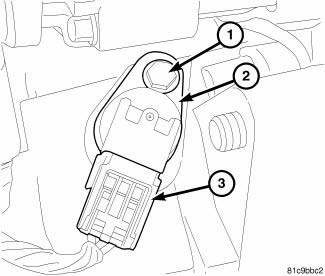
Fig. 44: 3.5L Camshaft Sensor
CAUTION: Install camshaft position (CMP) sensor utilizing twisting motion. Make sure CMP sensor is fully seated. Do not drive CMP sensor into the bore with mounting screw. This may cause CMP sensor to be incorrectly seated causing a faulty signal or no signal at all.
NOTE: If reinstalling the sensor, check the sensor O-ring for damage and replace if necessary. Lubricate the O-ring with clean engine oil before installing the sensor.
1. Push the CMP sensor (2) into the timing belt cover with a twisting motion until fully seated.
2. While holding the sensor (2) in this position, install and tighten the retaining bolt (1) to 12 N.m (106 in.lbs.).
3. Connect and lock the electrical connector (3) to the CMP sensor (2).
4. Connect the negative battery cable and tighten nut to 5 N.m (45 in. lbs.).
NOTE: The Cam/Crank Variation Relearn procedure must be performed anytime there has been a repair/replacement made to a powertrain system, for example: flywheel, valvetrain, camshaft and/or crankshaft sensors or components.
 Operation, Removal
Operation, Removal
OPERATION
CAMSHAFT AND CRANKSHAFT SIGNALS
Fig. 29: 4 Cylinder Cam & Crank Signals
NOTE: The graphic represents the relationship between camshaft and
crankshaft
sensors edges with cams ...
 Sensor, knock
Sensor, knock
...
See also:
Installation
LEFT-HAND-DRIVE
NOTE: The master cylinder must be bled before installing it on the
vehicle.
1. Bench bleed the master cylinder.
2. Wipe the face of the power brake booster clean where the ...
Description, Operation, Diagnosis and Testing
DESCRIPTION
The dual-note horn system features two electromagnetic horn units. The horn
system includes the following
major components:
Horn - The two horns are located at the front center of ...
Description, standard procedure
DESCRIPTION
Fig. 163: Engine Block & Crankshaft
- MAIN CAP BOLT-VERTICAL
- MAIN CAP
- MAIN BEARING-LOWER
- MAIN BEARING-UPPER
- MAIN CAP BOLT - HORIZONTAL
- CYLINDER BLOCK
- CRA ...
